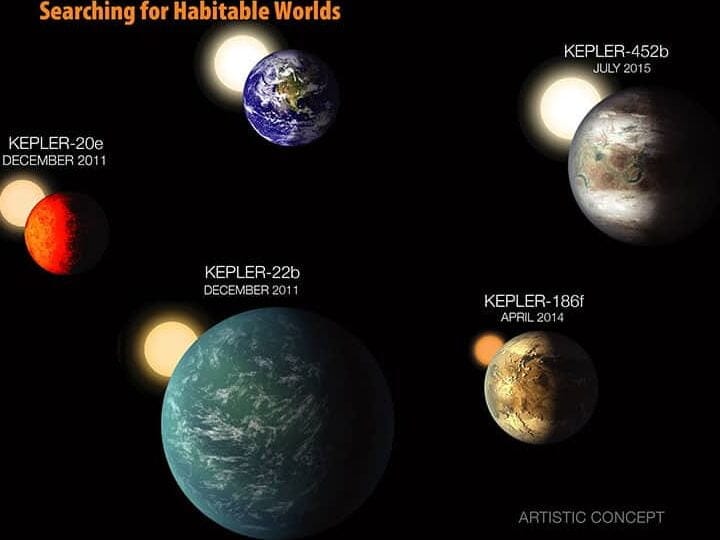
A team of international scientists, including researchers from the SETI Institute and NASA, has provided new insights into the Drake equation.
Their study suggests that there could be approximately 300 million potentially habitable planets within our galaxy. The Drake equation, developed by Dr. Frank Donald Drake in 1960, aims to estimate the number of habitable worlds that may exist in the Milky Way.
The equation consists of seven variables, including the rate at which stars are formed in our galaxy, the proportion of sun-like stars with planets, and the likelihood of life emerging on a planet with suitable conditions.
The issue lies in the lack of precise knowledge regarding any of these factors. Certain data is only known to an approximate degree, while others are purely speculative. Consequently, the Drake equation provides an estimate of the potential number of technological civilizations in our galaxy, ranging from one to one hundred million.
"Understanding the prevalence of various planet types is crucial in the planning of future exoplanet search missions," stated Michel Kunimoto, a study co-author.
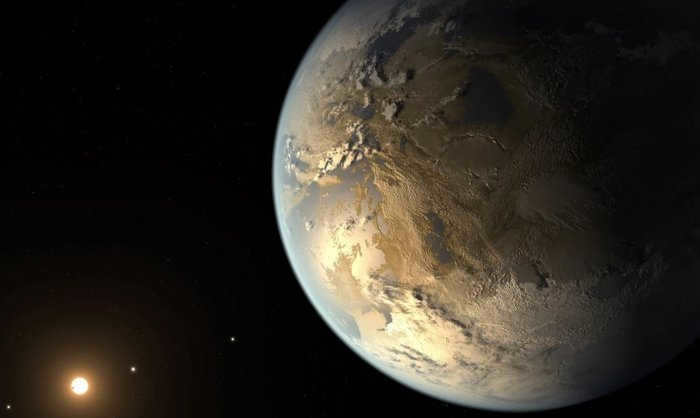
A team of scientists aimed to obtain a more accurate calculation for a specific variable in the equation – the quantity of potentially habitable planets in our galaxy. Their study focused on exoplanets that are similar in size to Earth, orbit around stars that resemble our sun, and are situated within a zone where the existence of liquid water is possible.
This research was similar to previous studies, but this time the researchers improved the consideration of the habitable zone factor by including not only the distance from the star, but also the amount of light received by the planet. To achieve this, they combined data from the Kepler telescope, which specializes in the discovery of exoplanets, with data from the Gaia mission, which measures the energy emitted by the parent star.
Consequently, the researchers have identified the potential existence of approximately 300 million habitable planets in the Milky Way galaxy, some of which could be located as far as 30 light-years away from Earth. However, this number may be subject to change as we gain a better understanding of how a planet’s atmosphere influences its ability to sustain liquid water. The scientists noted that they used a conservative estimate for this atmospheric impact.

14.9K posts 45.3K subscribers
Community Guidelines
What guidelines can be established here, other than the guidelines set by the peekaboo itself 🙂
In my unsupported opinion, it is also necessary to introduce habitability belts in the galaxy: in areas with a high concentration of stars, there may be no life-sustaining planets because…. all potential planets are sterilized with each supernova burst.
It’s astonishing to think about the vastness of the future imperium.
Essentially, these scientists could have made any claim. There’s no way to test it and it won’t have any impact.

Exploring the Galaxy

10 pictures, shutter speed 15 seconds, ISO 3200
Samsung s20fe
Southern Urals, green zone
The most enticing properties in the galaxy
In 1957, the Soviet Union launched the first artificial satellite, a milestone that is well-known to many. Since then, numerous space agencies, private companies, and research institutes have been actively expanding their presence in the solar system, conquering various frontiers along the way. The vast expanse of space seemingly offers endless opportunities for exploration, but certain areas hold a particular allure. One such example is the Lagrange points, which have captured the attention of all those interested in space. These points, named after an 18th-century mathematician who determined their locations, provide unique islands of stability within our ever-changing corner of the cosmos.
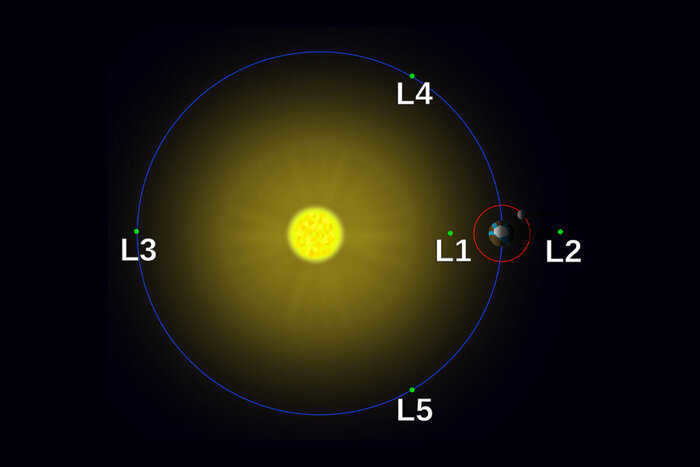
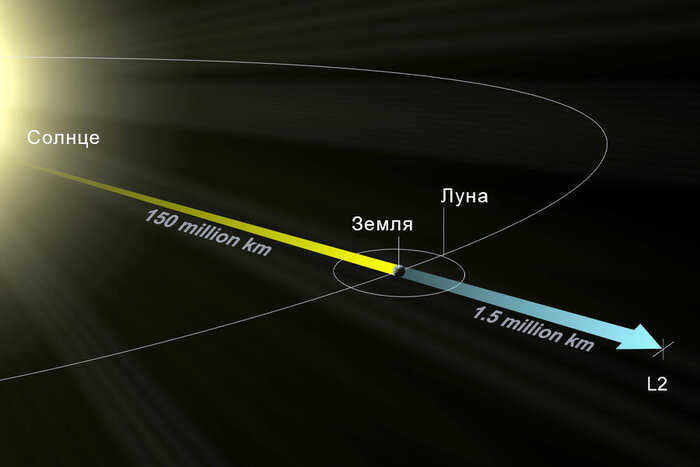
However, our system does not have many typical “parking lots”. The interaction between massive bodies creates five Lagrangian points for each pair of participants. For instance, the Sun possesses five points where it connects with any planet, and each planet has the same number of connections with its satellites. When you tally it all up, there are over 1000 Lagrangian points in our system, but only a few of them are practically useful for human space exploration. Many of these points are challenging to reach, and as we will discover later, not very stable. Currently, only two of these locations are actively utilized, but this situation may change in the future.
The issue of what can be placed in a specific Lagrangian point is quite fascinating. Let’s take a look at the ones formed by the gravitational interaction between the Sun and the Earth. L1 is situated approximately 1.5 million kilometers from our planet, right between these two celestial bodies. Being unobstructed by any celestial object, it serves as an excellent vantage point for observing the Sun.
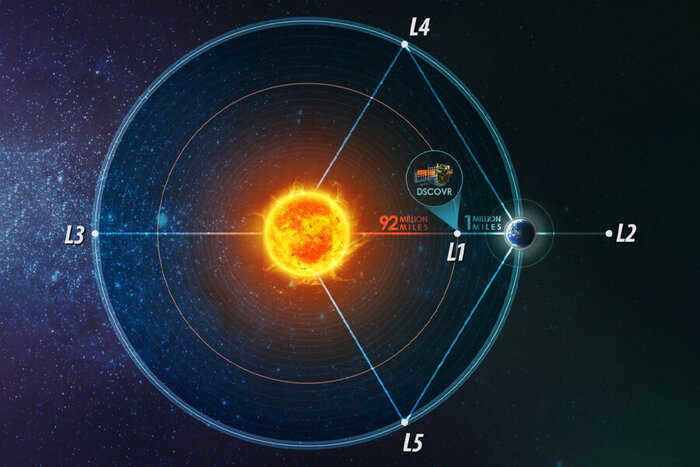
The Deep Space Climate Observatory is an American spacecraft positioned at Lagrangian point 1, dedicated to observing the Sun and Earth.
L2 is located on the opposite side of the Earth at the same distance. This location provides a secure shield from sunlight and offers unique opportunities for space observation. In 2022, the highly anticipated James Webb telescope finally commenced its operations from this vantage point, a launch that astronomers had been waiting for over two decades.
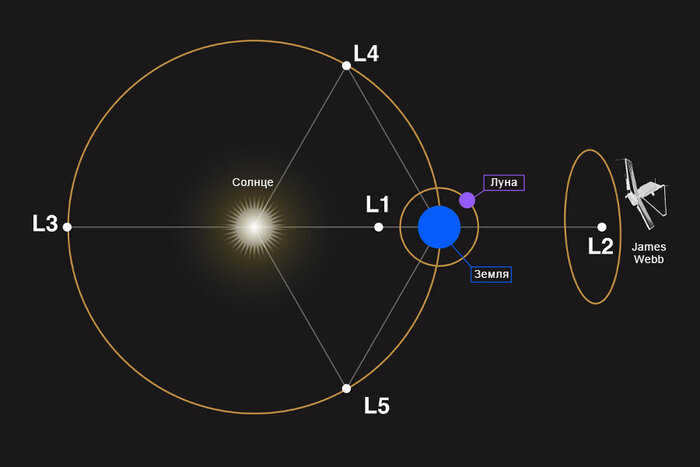
L3, located on the opposite side of Earth’s orbit from the Sun, is a highly enigmatic location. It is the sole point in the vast expanse of the universe that is completely out of reach from the perspective of any planetary surface. This unique characteristic has made it a popular subject for science fiction authors, while scientists, on the other hand, have found little practical value in it.
L4 and L5 exhibit some differences compared to the preceding points. The key distinction is that the initial three Lagrangian points in each set possess a slight instability, causing the objects within them to gradually shift sideways. While it is feasible to maintain them in these locations if desired, it does necessitate additional effort. In certain pairs of celestial bodies, the stability of L4 and L5 may not be particularly high, such as when their masses differ by less than a factor of 25. However, within the Sun-Earth system, where the star significantly outweighs the planet, these points demonstrate remarkable stability. Furthermore, they appear to attract various objects, with the most striking examples found in the L4 and L5 points of the Sun-Jupiter system, which have accumulated thousands of asteroids.
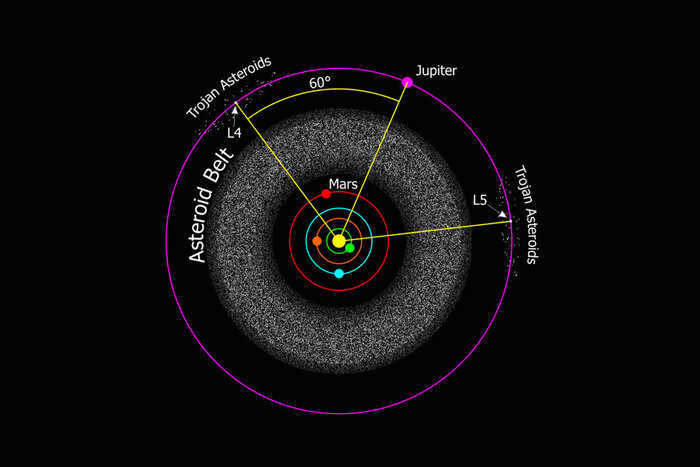
Each Lagrangian point within our solar system possesses its own unique characteristics. Some of these points could potentially serve as valuable sources for collecting construction materials, akin to drifting asteroids. Others may serve as ideal locations for refueling stations, allowing for the replenishment of fuel supplies for spacecrafts embarking on long-distance voyages into the vastness of outer space. Additionally, these points may even serve as potential habitats for human colonies, albeit in the far future. However, the realization of such possibilities remains uncertain, especially considering the state of our planet today. Nevertheless, it is always worthwhile to indulge in dreams, isn’t it?
Thank you for taking the time to read this! If you enjoyed the article, you have the option to show your support by giving it a “thumbs up” or subscribing to this channel. It’s also worth mentioning that we have our own Telegram channel where we regularly share fascinating posts about space and astronomy.
We genuinely appreciate each and every one of our readers. If you would like to provide financial support (by using the button below), your name or nickname will be mentioned at the end of our next publication. This is our way of expressing our gratitude for your kindness and support!

Scientists have conducted an analysis on the characteristics of previously found planets beyond our solar system and have come to the conclusion that there could be several tens of thousands of habitable planets in the Milky Way, if astronomers are able to discover at least one such planet in the next few decades. The findings of their calculations were recently published in the scientific journal Proceedings of the National Academy of Sciences.
“One of the main objectives of astronomy in the upcoming decades is to identify signs of life on the surfaces of exoplanets. Our calculations indicate that if we were to discover just one planet with potential signs of life, it would imply, with a 95% probability, that there are tens of thousands of inhabited worlds within the Milky Way,” stated the researchers.
Half a century ago, the American astronomer Frank Drake developed a formula that could be utilized to compute the number of extraterrestrial civilizations in our Galaxy that we could potentially make contact with, as well as to assess the likelihood of this happening. Drake’s calculations demonstrated that there must be a vast number of such planets and that it was inevitable for humanity to encounter their inhabitants.
Nevertheless, in the years that followed the equation’s publication, no contact with extraterrestrials took place. Scientists of that time, including Enrico Fermi, began to question the validity of Drake’s assumptions. Consequently, the Italian scientist formulated the “Fermi paradox”: if intelligent extraterrestrials do exist, why has humanity not yet detected any evidence of their existence?
Scientists are still grappling with the paradox and have yet to find a resolution. In the past, it was believed that the lack of contact with extraterrestrial civilizations was due to the unique conditions on our planet that are necessary for the development of intelligent life. However, this hypothesis now seems less likely as astronomers have discovered thousands of earth-like planets in our nearest star systems.
The Future of the Search for Extraterrestrial Life
Amedeo Balbi, a professor at the University of Rome Tor Vergata in Italy, and Claudio Grimaldi, a researcher at the Federal Polytechnic School of Switzerland, have taken on a simpler task – calculating the number of potentially habitable planets.
The scientists took into consideration the current knowledge about conditions on other planets and the impact of advancements in astronomy and telescope construction on mankind’s future perspective. They focused on the number of civilizations that could be detected presently, rather than the total number that have existed in the Milky Way.
Using these principles, the researchers developed multiple scenarios to predict the potential number of habitable planets that humanity could uncover in the next two to three decades, both in terms of maximum and typical discoveries.

14.9K posts 45.3K subscribers
Community Guidelines
What guidelines can there be here, except for the guidelines set by the peekaboo itself 🙂
And why is the hypothesis of the unlikelihood of unique intelligent life? First of all, an earth-like planet is a very vague term. We know very little about them so far – their chemical composition, the presence of a magnetic field, and so on. In fact, when we talk about earth-like planets, we are only referring to their size, mass, and energy density of the star. That is not enough to determine their suitability for life.
Secondly, habitable does not necessarily mean inhabited. My apartment is habitable for an ostrich, you know, but there are no ostriches in it.
Furthermore, life and intelligence are not synonymous. The Earth has been inhabited for billions of years, whereas the concept of the mind has only been present for a mere tens of thousands of years. The existence of civilization, on the other hand, is a relatively recent occurrence, spanning around ten thousand years. Even more advanced technology has only emerged within the last few centuries. Despite these advancements, Earth’s civilization is currently facing the threat of extinction.
Therefore, it is plausible that civilizations are incredibly rare, with their prime period being so short in comparison to the age of the universe that they simply do not have enough time to encounter one another. I am inclined to envision a galaxy filled with planets that bear remnants of long-extinct civilizations rather than a hypothetical “Babylon-5” scenario.
I firmly believe that life exists on other planets, but I doubt that we will ever have the opportunity to meet them.
It is highly improbable for an Earth-like planet to emerge in close proximity to a specific type of star.
It is improbable that a planet would have suitable conditions.
Suitable conditions are improbable to exist for an extended period of time.
The likelihood of the origin of life is low.
The probability of the origin of intelligence is low (how could hundreds of millions of years have been lived without it, and quite successfully)
And most importantly, it is improbable that intelligence would simultaneously originate in nearby systems.
And we’re not going to reach the distant ones.
Ahem, and I’m eagerly anticipating the discovery of extraterrestrial life, not only because of the possibility of contact, but also to witness the downfall of all religion)))!

The Milky Way

10 pictures, exposure time of 15 seconds, ISO 3200
Samsung s20fe
Southern Urals, designated as a green zone
The most alluring plots of land in the entire solar system
In 1957, the Soviet Union launched the first artificial satellite, which is widely known. Since then, numerous space agencies, private companies, and research institutes have been expanding their presence in the solar system. Over the years, they have conquered countless frontiers, making it impossible to compile a comprehensive list. While the vast expanse of space may seem accommodating to all, certain “real estate” objects hold greater allure than others. One such example is the Lagrange points, which attract the attention of all interested parties. These points are named after the 18th-century mathematician who determined their location and are highly valuable as stable islands amidst the ever-changing cosmos.


However, our system does not have many typical “parking lots”. A combination of massive objects interacting with one another creates five Lagrangian points for each pair of participants. For instance, the Sun has five points of interaction with any planet, and each planet has the same number of interactions with its satellites. When all these points are taken into account, there are over 1000 Lagrangian points in our system. However, only a few of them have practical value for space explorers. Most of these points are challenging to reach, and as we will discover later, they are not very stable. Currently, only two of these locations are actively utilized, but this situation may change in the future.
It is quite intriguing to explore what can be placed in a specific Lagrange point. Let’s focus on the ones formed by the gravitational interaction between the Sun and the Earth. L1, positioned approximately 1.5 million kilometers from our planet, lies between these two celestial bodies. This unique location offers an unobstructed view of the star, making it an ideal spot for observing the Sun.

The Deep Space Climate Observatory is a spacecraft from the United States designed to observe the Sun and Earth. It is situated at Lagrangian point 1.
Lagrangian point 2, or L2, is located on the opposite side of the Earth at the same distance. This strategic position provides reliable protection from sunlight and offers unique opportunities for observing the cosmos from a different perspective. In 2022, the highly anticipated James Webb telescope, which astronomers have eagerly awaited for two decades, began its operations at this location.

L3 is located in the most enigmatic region, situated directly opposite the Sun in Earth’s orbit. It occupies a unique position in the Universe that is completely invisible from the planet’s surface, making it a popular subject for science fiction authors. However, scientists have limited interest in this particular point.
L4 and L5 exhibit some slight differences compared to the preceding points. The key distinction lies in the fact that the first three Lagrangian points in each set possess a degree of instability, causing objects within them to gradually shift sideways. While it is possible to maintain objects within these points if desired, it does require additional effort. In certain celestial body pairs, the stability of L4 and L5 may not be particularly high, particularly if their masses differ by less than a factor of 25. However, in the case of the Sun-Earth system, where the star significantly outweighs the planet, these points demonstrate remarkable stability. Furthermore, they appear to exert an attractive force on various objects – the most notable example being the L4 and L5 points of the Sun-Jupiter system, where thousands of asteroids have gathered.

Each Lagrangian point within our solar system possesses its own unique qualities. Some of these points could serve as valuable sources for collecting building materials, assuming that drifting asteroids can be considered as such. Others have the potential to become refueling stations, where ships can replenish their fuel reserves before embarking on journeys into the vast depths of space. It is even conceivable that these points could serve as locations for future human colonies, suspended amidst the cosmos. While this vision may seem far-fetched and distant, given the current state of affairs on Earth, it is still a pleasant thought to entertain, isn’t it?
Thank you for taking the time to read this! If you enjoyed the article, you have the option to show your support by giving it a “plus” or subscribing to this channel. We also want to mention that we have our own Telegram channel where we regularly share fascinating posts about space and astronomy.
We genuinely value each and every one of our readers. If you would like to contribute financially (via the button below), your name or nickname will be included at the end of the next post. This is our small way of expressing our gratitude for your generosity and support!

A team of scientists from Pennsylvania State University has concluded that our Milky Way galaxy may be home to a wide range of planets similar to Earth, with warm climates and abundant water. This conclusion was reached after analyzing data from the Kepler space telescope. The researchers, who have published their findings in the Astronomical Journal, estimate that approximately one in every four sun-like stars in our galaxy could have a planet similar to Earth. This means that there could be as many as ten billion of these Earth-like planets in the Milky Way.
“What does it mean to be “Earth-like”?
A group of researchers, headed by Professor Eric Ford in the field of astrophysics, conducted a study that focused on specific criteria to determine the similarity between exoplanets and our own planet. In order to be considered “Earth-like,” an exoplanet must meet certain conditions including having a size ranging from 0.75 to 1.5 times the diameter of Earth. This size range indicates that the exoplanet is likely to have a rocky surface similar to Earth, and its gravity would be comparable to that of our planet.
Additionally, the planet’s rotation period around its star must range from 237 to 500 Earth days, ensuring that its year is not significantly different from ours. This is due to the fact that stars resembling our Sun have a specific range of orbital distances for planets, known as the habitable zone. Planets located within this zone may potentially contain liquid water on their surfaces, a crucial element for supporting life as we know it.
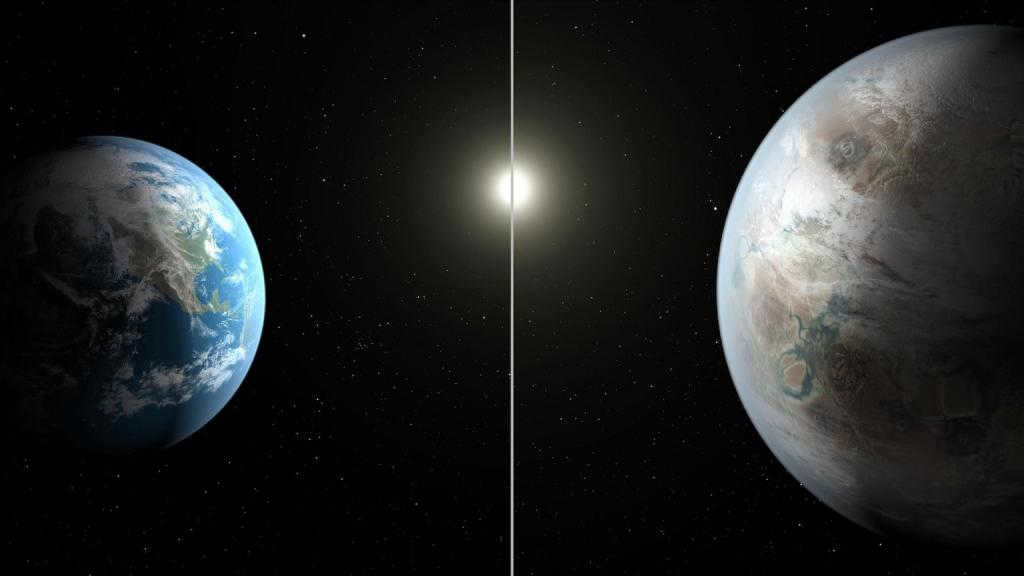
Kepler Data Analysis
The research was conducted utilizing data obtained from NASA’s orbiting observatory known as Kepler, which was operational from 2009 to 2018. The observatory closely monitored over 530,000 stars within a specific region of the sky, with the primary objective of identifying exoplanets through the transit method. This method involved monitoring and recording temporary decreases in the star’s brightness, which occurred periodically as a planet passed between the star and the observer on Earth.
The Kepler mission resulted in the detection of over 2600 exoplanets, with a substantial number of them being part of multi-planet systems. As not all planetary systems are positioned in a way that allows for direct observation of planet transits, scientists have hypothesized that there must be a significantly greater number of planets than stars in our galaxy. The diverse range of exoplanets discovered by Kepler highlights their potential for being similar to Earth.
Based on Kepler’s data, astronomers have estimated that 20 to 50 percent of stars could possess Earth-like planets within their habitable zones.
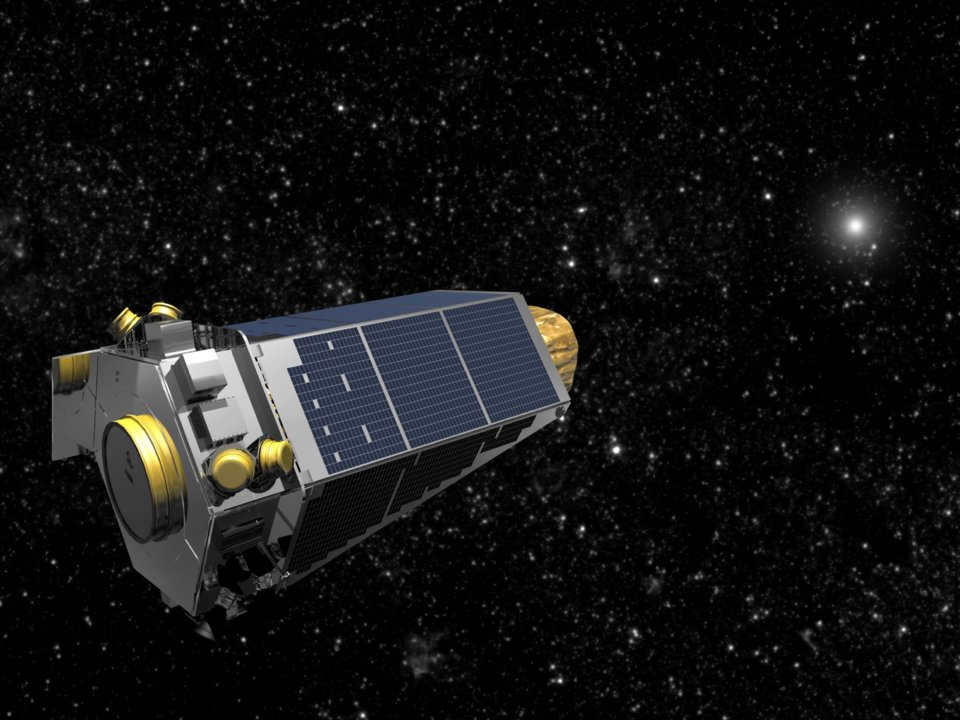
Further Analysis
Nevertheless, merely relying on the findings of a single mission, no matter how successful it may be, is insufficient for making a well-informed assessment regarding the total quantity of planets of a specific type. The transit method inherently has its limitations, and it was inevitable that Kepler would overlook a notable number of intriguing celestial bodies.
In order to estimate the number of planets that might have been overlooked during the observations, scientists conducted a simulation that combined the data from the Kepler catalog with information gathered from the Gaia spacecraft’s survey of stars in the Milky Way, which was launched by the European Space Agency in 2013.
A set of computer models was used to simulate hypothetical galaxies. These models were used to observe stars using the same method as the Kepler survey. The simulations produced results such as the number and types of exoplanets “detected”. These results were then compared to real data. This comparison allowed scientists to estimate the number of Earth-like planets in the habitable zones of stars similar to our Sun. However, there is some uncertainty in defining these stars, determining the boundaries of habitable zones, and the size range of the planets under consideration. Professor Ford stated, “Based on our calculations, we believe there are somewhere between 5 to 10 billion planets that are of interest to us.”
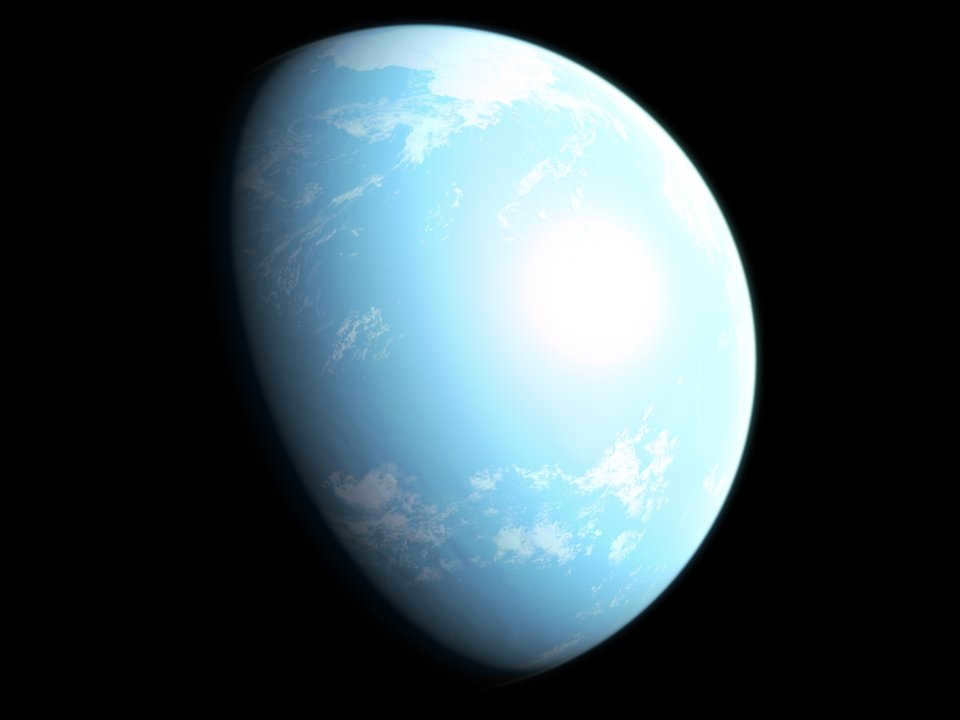
Exploring the Existence of Extraterrestrial Life
These celestial bodies hold promise in the quest to unravel the existence of possible extraterrestrial life. To gauge the likelihood of such a discovery, it is imperative to first delve into the composition of the planetary atmosphere. The transit method presents scientists with a unique opportunity, as it enables them to observe the star’s light as it passes through the planet’s gaseous envelope, thereby undergoing changes in its spectral characteristics based on the chemical makeup. Researchers are actively searching for traces of biomarkers, such as water, oxygen (including ozone), carbon dioxide, and methane, within exoplanetary atmospheres. The presence of these substances could potentially indicate the presence of living organisms on these distant worlds.
The research conducted by Eric Ford and his team holds great significance in the quest to find similar worlds in our galaxy. Discovering these planets in close proximity to the Sun would enable astronomers to study them using less expensive instruments. Conversely, if there are only a few such planets, it would necessitate the use of larger, more powerful, and consequently more costly telescopes.
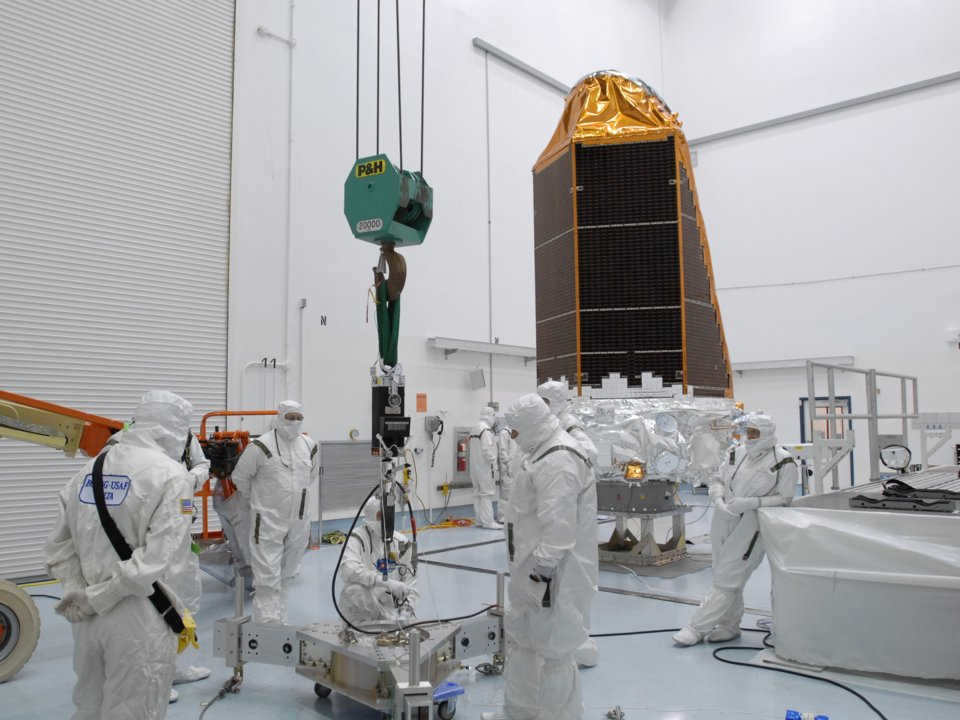
Currently, the scientists suggest that when planning future missions to explore potentially habitable planets, they should concentrate on observing approximately one out of every 33 stars similar to our sun. Ford emphasizes the importance of not just selecting any object to study, but rather defining the range of possibilities. This approach will enable the development of a robust search strategy. The hope is that further investigation will clarify the specific limits of this range and contribute to the success in finding planets resembling Earth that may harbor signs of life.
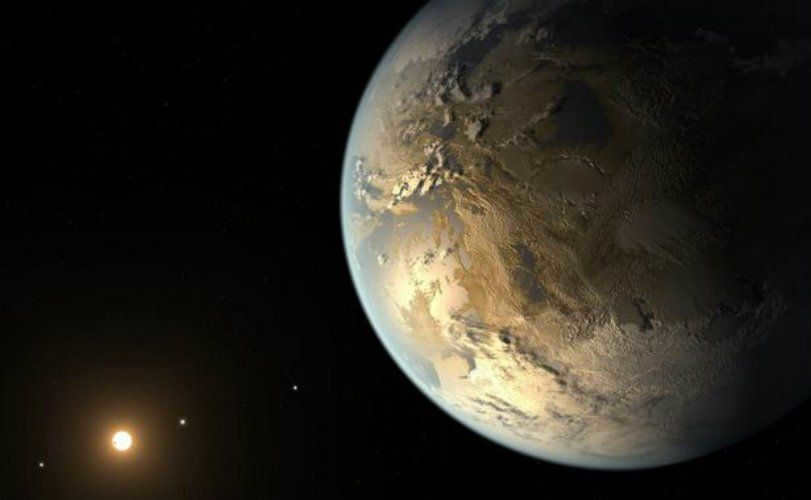
A group of astronomers has utilized information from the Kepler and Gaia telescopes to make an approximation of the quantity of planets that could potentially support life in our galaxy, the Milky Way. The findings of their research have been documented in The Astronomical Journal.
The Drake equation, proposed by Dr. Frank Drake in 1961, is a well-known formula that aims to estimate the potential number of extraterrestrial civilizations in our galaxy with which we may have contact. This equation considers several factors, including the annual number of stars formed in our galaxy, the proportion of stars with planets, or the expected number of potentially habitable planets per star. It also takes into account the fraction of these planets where life actually emerges, the fraction of these planets where intelligent life emerges, and the fraction of these planets that are capable and willing to communicate. Lastly, the equation considers the average lifespan of a civilization in years.
However, the issue lies in the fact that the certainty of none of these factors is known. Some factors have only approximate estimations, while others remain completely unknown. Consequently, considering the significant level of uncertainty, the Drake equation approximates that the number of technological civilizations ranges between one and one hundred million.
Estimating the quantity of potentially inhabitable planets
A team of astronomers from the SETI Institute, NASA, and various international organizations conducted a study utilizing Kepler data to obtain a more accurate assessment of one of the variables in the equation. The objective was to determine the quantity of planets that could potentially sustain life in our galaxy.
With this objective in mind, the researchers concentrated on exoplanets that share similarities in size with Earth (and therefore likely to have a rocky composition) and orbit around a Sun-like star. These exoplanets are of the same type, approximately the same age, and possess a similar surface temperature. The team also only took into consideration planets that orbit within the habitable zone of their star, where liquid water could exist on the planet’s surface.
It is important to mention that previous calculations to determine the quantity of exoplanets with potential habitability in our galaxy were solely based on the proximity between a planet and its star. However, this recent research incorporates an additional factor: the level of illumination received by the planet. Bearing this in mind, the team also analyzed data from the Gaia mission, conducted by the European Space Agency (ESA).
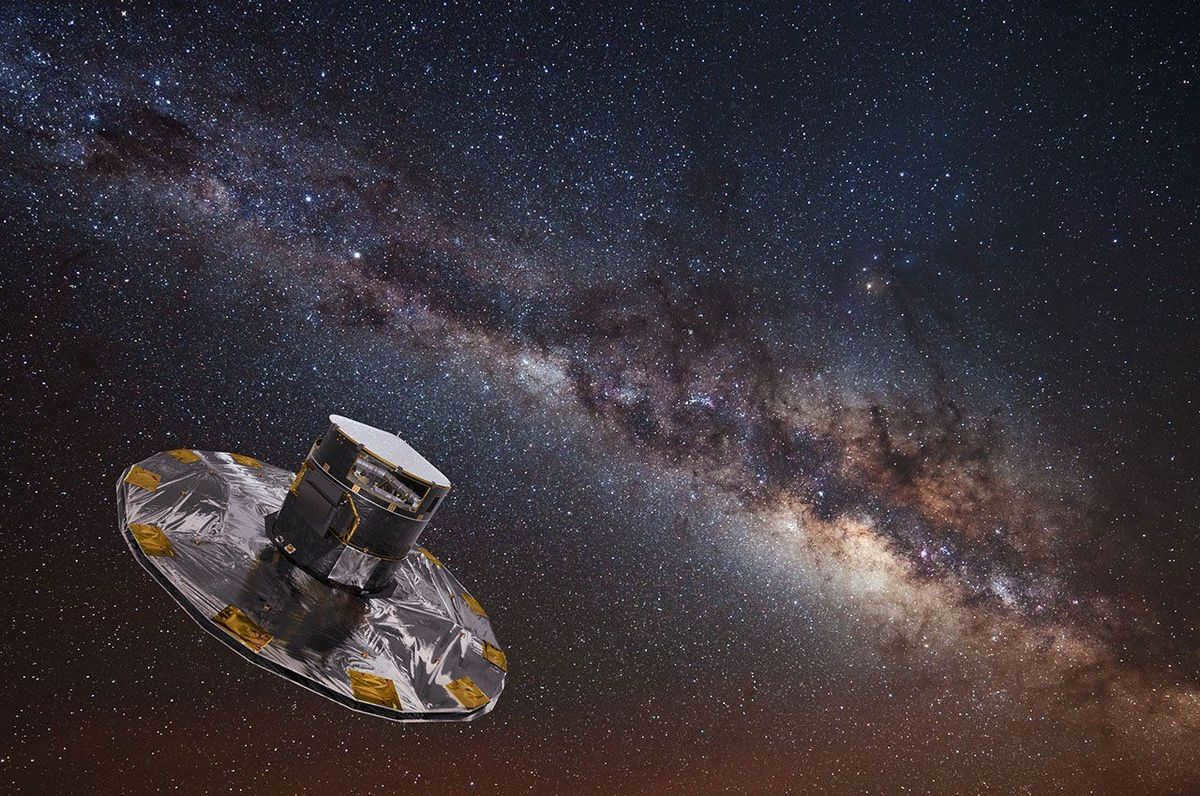
More than 300 million planets in our galaxy are potentially habitable
Based on the accumulation of numerous data, scientists have calculated that there are over 300 million planets in our galaxy that could potentially support life. Some of these planets could even be located as far as 30 light-years away from our Sun.
It is important to note that the researchers did not take into account the significance of the atmosphere in their analysis. As our understanding of how a planet’s atmosphere influences its potential to sustain liquid water improves, this estimate may be adjusted accordingly.
Michelle Kunimoto, one of the authors of this study, emphasizes the significance of understanding the prevalence of various planet types, stating that it “plays a crucial role in planning future missions to explore exoplanets”. She adds that “investigations focused on small, potentially habitable planets orbiting stars similar to our sun will rely on these findings to optimize their likelihood of achieving positive outcomes”.
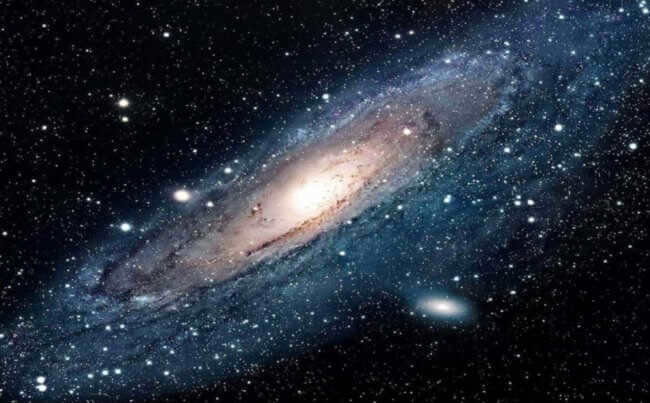
Scientists are unable to provide an exact number for the amount of galaxies that exist in the universe. Currently, they estimate that there are approximately two trillion galaxies. Our planet, Earth, is situated within the Milky Way galaxy as part of the solar system. At present, Earth is the sole known habitable planet according to scientists. However, there is a belief among some that life may be present on other galaxies as well, but our technology is not advanced enough to detect it yet. This is due to the fact that there are numerous Sun-like stars in the Universe, which could potentially host Earth-like planets with the necessary components for life, such as water. Recently, astronomers have been analyzing data collected by the Kepler telescope in an attempt to determine the number of potentially habitable planets within the Milky Way galaxy. They have achieved success, and the resulting number is astonishing.
Behold, our very own Milky Way galaxy.
What is the Kepler telescope?
The Kepler space observatory, which was created by the NASA aerospace agency and launched in 2009, is a remarkable instrument. It surveyed approximately 0.25% of the entire celestial sphere, an area that can be compared to the size of your hand when held up against the sky. Unfortunately, in 2018, the telescope exhausted its fuel and ceased operation. However, during its active years, it amassed a wealth of invaluable data, including the identification of 2,800 exoplanets beyond our solar system. It’s important to note that these are only the confirmed planets, as there are believed to be several thousand more yet to be discovered. The scientific community eagerly awaits the accumulation of sufficient evidence to unveil these distant worlds.
The Kepler Space Telescope
Existence of Extraterrestrial Life
In order to determine the potential number of planets capable of sustaining life within the Milky Way galaxy, scientists have embarked on a quest to identify stars resembling our own Sun. Specifically, they have focused on dwarf stars with surface temperatures ranging from 4,500 to 6,000 degrees Celsius. The Kepler mission has yielded numerous discoveries of planets situated within the habitable zones of these stars, which refers to the region surrounding a star where conditions favorable for the emergence of life can be maintained. This region strikes a delicate balance, avoiding extreme temperatures that would render liquid water uninhabitable. Consequently, scientists have been particularly interested in identifying planets that closely resemble the size and structure of our own Earth within these star systems.
The Position of the Solar System within the Milky Way Galaxy
Considering that the Kepler telescope observed just 0.25% of the vast expanse of the cosmos, researchers have deduced that within our galaxy there exist approximately 300 million stars akin to our own sun. Each of these stars could conceivably harbor at least one potentially habitable planet. It’s worth noting that approximately 3-4 of these stellar systems could be situated a mere 30 light years from our own solar system. In the grand scheme of the universe, this distance is rather minuscule. It may be feasible for us to detect signs of life on these distant planets within a few years, though presently we still have a long journey ahead of us.
According to scientists, it is estimated that there are approximately 300 million planets in the Milky Way galaxy that could support life. This is truly astounding, as it is difficult to fathom the sheer number of potential living organisms that could inhabit these planets. Furthermore, these organisms would likely be unlike anything we are familiar with, possessing organs and physical characteristics that are completely incomprehensible to us. The appearance and features of these alien creatures would be determined by the unique conditions of their respective planets. Just as the human race has adapted to its environment, these organisms would have evolved to thrive in their own habitats. To illustrate, our own ancestors were not initially capable of walking on two legs, yet today we cannot envision life without our upright posture.


